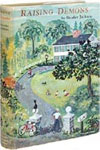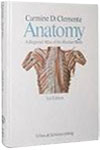Map No. 3 Rocky Mountains to Puget Sound; from Explorations and Surveys Made Under the Direction of the Hon. Jefferson Davis Secretary of War.
1859 Isaac Stevens Map of Washington Territory, surveyed for the Railroad
From
Geographicus Rare Antique Maps, Brooklyn, NY, U.S.A.
Seller rating 4 out of 5 stars
![]()
AbeBooks Seller since November 21, 2024
About this Item
Description:
'An Excellent Map' -Wheat Very good. Some wear at folds and few spots. Left margin extended. This is a superb example of the map detailing Isaac Stevens' 1853-1854 reconnaissance of a railway route through the Rocky Mountains to the Pacific. This was part of a broad United States effort to determine a workable rail route to the Pacific through the Rockies, in the hope of opening Asian markets to American trade. Stevens, then en route to take up his new role as governor and Superintendent of Indian Affairs for the Washington Territory, successfully bid to undertake this survey of the route, which was executed over most of 1853 and part of 1854. A Closer Look Carl Wheat, in Transmississippi West, admires this map, calling it the most complex of all that were made of Stevens' exploration… it is an excellent map and one which indicates clearly the difficulties encountered in getting a railroad route through the various ranges of mountains that lie east from tidewater to the summit of the Rockies. Focusing predominantly north of the Columbia River, the map begins in the east at the Snake and Marias Rivers, all the way to the Pacific coast between the Columbia and Vancouver Island. The intervening space - covering what is now western Montana, northern Idaho, and Washington State - is occupied by the Rocky Mountains, indicated pictorially with hachure. The map's primary content is the array of routes taken by Stevens, subordinates in his expedition, and several other surveys, marked in light dotted lines through the hachured mountains. Darker dotted lines indicate routes that the survey considered probably practicable; the solid black lines indicate routes recommended as practicable railroad routes. Detailed notes indicate specific types of terrain, mountain peaks, features such as hot springs, forests, military camps, missions, and Native American settlements. A Fortunate Survival The map was included in the 1857-1860 quarto edition of the Pacific Railroad Reports, that is Reports of Explorations and Surveys to Ascertain the Most Practicable and Economical Route for a Railroad from the Mississippi River to the Pacific Ocean. According to Wheat, the maps for this monumental production were published in volume XI, in 1859. These tended to survive poorly. Wheat commented, in 1959, that the maps are generally very large and thus require many-folded sheets, with the result that over the years the folds (or some of them) have greatly deteriorated and are often torn or discolored, even in instances where they have remained folded. And where they have been unfolded from time to time they are inevitably torn… The present example, happily, is predominantly free of these indignities, and barring a few spots and one closely trimmed margin, is in remarkably clean condition. Publication History and Census This map, based on surveys executed between 1853 and 1855, was lithographed in Washington, D.C. by Selmar Siebert in 1859 for inclusion in volume XI of Reports of explorations and surveys to ascertain the most practicable and economical route for a railroad from the Mississippi River to the Pacific Ocean. Perhaps a dozen examples of the separate map are listed in OCLC. The bound reports are ubiquitous in institutional collections. References: OCLC 44942976. Rumsey 0693.022. Wheat, Carl Irving, Mapping the Transmississippi West, 1540-1861, v. 3, no. 866. Seller Inventory # WashingtonTerritory-stevens-1859
Bibliographic Details
Title: Map No. 3 Rocky Mountains to Puget Sound; ...
Edition: 1859 (undated).
AbeBooks offers millions of new, used, rare and out-of-print books, as well as cheap textbooks from thousands of booksellers around the world. Shopping on AbeBooks is easy, safe and 100% secure - search for your book, purchase a copy via our secure checkout and the bookseller ships it straight to you.
Search thousands of booksellers selling millions of new & used books
New & Used Books
New and used copies of new releases, best sellers and award winners. Save money with our huge selection.
Rare & Out of Print Books
From scarce first editions to sought-after signatures, find an array of rare, valuable and highly collectible books.




